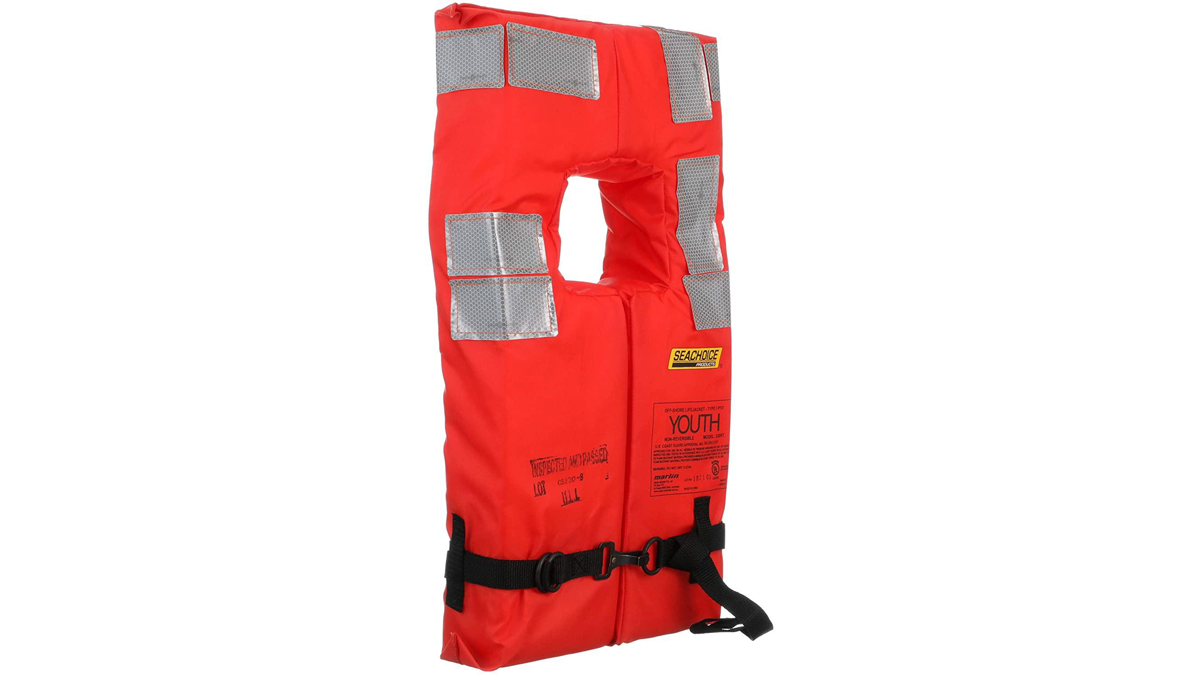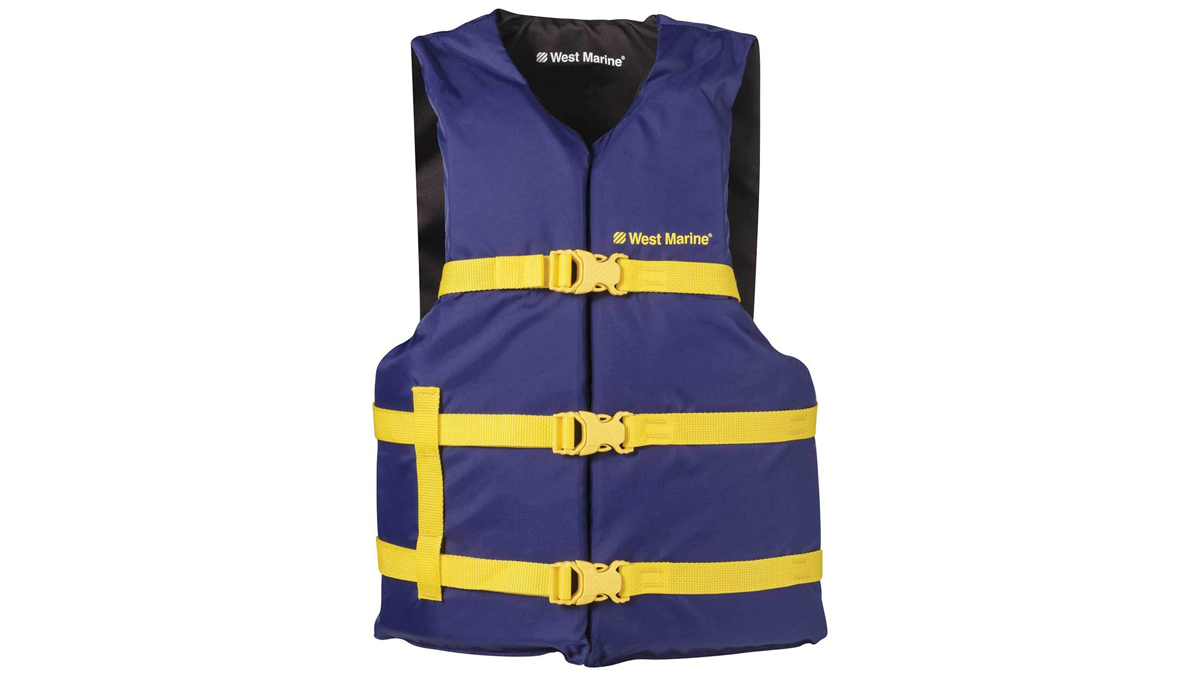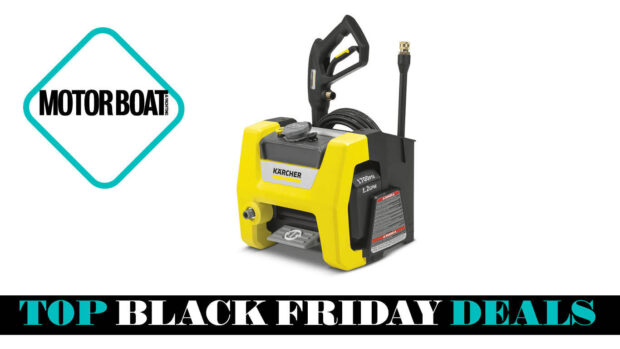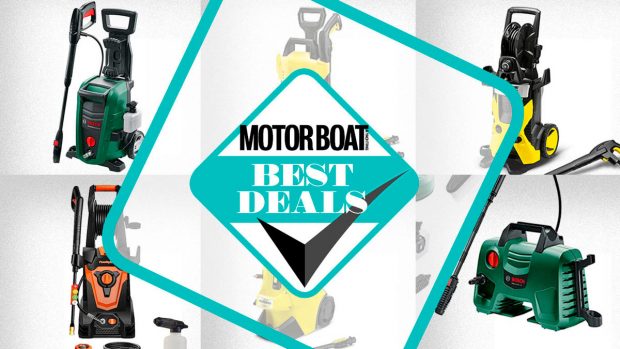Serial boat owner Drew Maglio picks out five of the best life vests available on the market right now and explains what you get for your money…
Whether you call it a life jacket or a life vest, few items are of greater significance or life-saving merit onboard a boat. The life jacket was invented in the middle of the 19th century as an answer to an increased incidence of drowning deaths, caused by the advent of iron ships, which did not leave floating debris in the event of a disaster like wooden ships did.
While the basic design and concept remains the same, outfitting your boat with an adequate number of the proper type of PFDs (personal flotation devices), is not so simple as it appears at first glance.
Learn about the different types of life vests
5 of the best life vests available right now
Kent Type I Life Jacket
This Type I life jacket by Kent is available at Cabela’s and is a premium option for bluewater boaters or those cruising coastal waters where help may not be readily available and hypothermia is a risk.
Reasons to buy:
• Contains 32 lbs. of positive flotation, 7lbs. more than the required 25 lbs
• Will turn unconscious persons face up
• Adjustable straps for comfort
• Reflective strips to aid with rescue at night
• Contains a provision to attach a safety light
Reasons to avoid:
• More expensive than other Type I life jackets
• Only comes in one size
RRP: $49.99
Note: We may earn a commission when you buy through links on our site, at no extra cost to you. This doesn’t affect our editorial independence.
Seachoice Type I commercial offshore life vest
A slightly cheaper version of a Type I life jacket, this Seachoice product is available on Amazon. Unlike the Kent option, the Seachoice life jacket has the appearance of a Type II variety, although it is still designed to turn an unconscious person face-up in the water.
Since Seachoice does not list its amount of positive flotation material, it is a safe assumption that this product contains the bare minimum amount of buoyant material.
Reasons to buy:
• Cost less than alternatives
• Designed to turn an unconscious person face up in the water
• Has reflective strips to aid with search and rescue
Reasons to avoid:
• Contains less positive flotation than alternatives
• Less comfortable and user adjustable design
RRP: $42.95
O’Neill Reactor USCG Type III life vest
This life vest made by O’Neill, is one of the best life vests if you enjoy watersports like waterskiing, wake boarding, tubing or kayaking. While it is not classified as a life saving device, it is positively buoyant and will aid struggling swimmers in the case of an emergency.
Reasons to buy:
• Heavy duty straps and padded design provides impact protection for waterports
• Sporty and stylish appearance
• Extremely adjustable
• Comes in difference sizes and colors
• Neoprene material provides some warmth and dries quickly
Reasons to avoid:
• Expensive
• Does not have much buoyant material compared to other options
RRP: $80-$115 (depending on size)
Buy it now on Amazon (Women’s)
West Marine Runabout Type III life vest
Best budget life vest
For more frugal boaters, this Type III utility floatation aid offered by West Marine may be a good alternative, as it offers most of the advantages of the O’Neill product at a fraction of the cost.
Reasons to buy:
• Cost effective
• Adjustable
• More comfortable for water activities than a Type II life jacket
Reasons to avoid:
• Only comes in one size and color
• Does not have neoprene exterior for warmth and comfort
RRP: $21.99
West Marine All Clear Type II offshore inflatable life jacket with harness
This offshore-capable life jacket comes with a stainless steel ring that can be attached to a tether harness, making it particularly useful for bluewater boaters.
While expensive, the life jacket only inflates when needed (either automatically on contact with water or manually with the pull of a string) and is therefore so unobtrusive that its presence will seldom be felt.
With reflective strips and ample buoyancy when inflated, this multi-functional safety device is truly a wise investment and offers two benefits in one (personal flotation while also providing a tether for working the deck at sea) small but complete package.
Reasons to buy:
• Multi-dimensional as it is both a very well-made and durable PFD and tether attachment point
• Unobtrusive and comfortable
• Has reflective strips for search and rescue at night
• Available in a choice of two colors
Reasons to avoid:
• Very expensive
• Relies on a CO2 cartridge that requires refill
RRP: $219.99
Buy it now from West Marine (Blue)
Buy it now from West Marine (Red)
Understanding the different types of life vests
There are three basic types of PFDs: Type I, II, and III. The first type, also known as an offshore lifejacket, is large, cumbersome, but is suitable for extended usage offshore as a life-saving flotation device in rough conditions where quick rescue is unlikely.
Type II covers life vests, more streamlined and comfortable, but is still suitable for use as a life-saving flotation device in coastal waters where swift rescue is likely.
Type III, or floatation aid, is the most comfortable, but is only suitable for more casual use in activities like boating, kayaking, jet skiing, and participating in various watersports.
Type I PFDs have to contain at least 22lbs of positive flotation material, while Type II and Type III only require 15.5lbs.
Kids life vests only require 11lbs of buoyancy for Type I, while inflatable life jackets require 34lbs of buoyancy for Type II and 22.5lbs for Type III.
Type I (and Type II to a lesser extent) is designed to turn most people face up, if they happen to fall unconscious in the water.
Type I also helps to retain some body heat, since it has additional foam and fabric.

Life jacket, life vest or floatation aid? Always make sure you’re using the right PFD for your style of boating
Unlike Type I life jackets, Type II life vests require you to tread water in rough seas to keep your head above the waves.
The least cumbersome to wear are Type II inflatable life jackets. These are lightweight and compact, with automatic inflation when you hit the water, but are only suitable for adults and children over the age of 16.
A full head-to-head test of offshore inflatable lifejackets will be published in an upcoming issue of Motor Boat & Yachting.
Didn’t find what you’re looking for? Head to Amazon’s dedicated boating page for more marine products.















